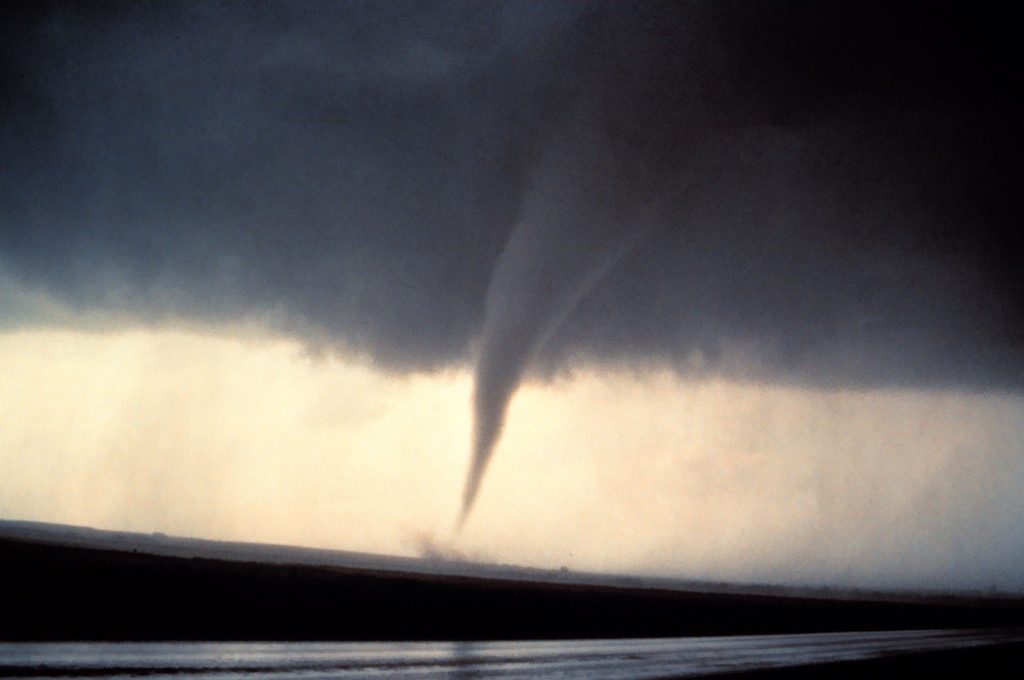Tornados and Driving Safety
May 11, 2018
What to Do If You’re Caught in Your Car During a Tornado
Tornadoes are the most violent storms anywhere, and about 1,200 touch ground in the United States every year, according to the National Weather Service (NWS).
They’re as unpredictable as they are violent, most often occurring in the early spring on the Gulf Coast, in May and June on the southern plains, and in June and July in the upper Midwest. But, tornadoes can occur any time of year and have been recorded in every state, says the NWS.
If a twister forms when you’re traveling through an unfamiliar region, or even while driving near home, you don’t have much time to make smart decisions that can help save your life. The NWS and Red Cross recommend these actions if a tornado catches you while you’re on the go:
Be Alert and Prepared
- Know the difference between a watch and a warning:
- Tornado Watch: Tornadoes are possible around the general watch area. This tells you to be alert and prepared.
- Tornado Warning: A tornado has been seen or has appeared on weather radar. This tells you to take immediate action to protect yourself and family.
- Know how to access emergency broadcasts in case you encounter worrisome conditions:
- Local news stations.
- NOAA Weather Radio. Dial the VHF public service band from 162.400 to 162.550 MHz for the National Oceanic and Atmospheric Administration (NOAA) All Hazards broadcast.
- Local NWS Weather Forecast Office. Access local watches, warnings, forecasts and radar images online – just not while driving.
- Know the warning signs of a tornado:
- Dark clouds, frequently greenish.
- A wall cloud, attached to the base of a thundercloud but isolated and lowering.
- Flying debris.
- Large hailstones.
- A roaring noise, ranging from the sound of a waterfall to that of a jet engine.
- A funnel cloud, a rotating funnel extending from the base of a thundercloud. Once it touches the ground, a funnel cloud is a tornado.
If You’re Caught Outside or Driving
1.Don’t wait to see a funnel once you hear a Tornado Warning.
- Run to a sturdy building. The basement is the safest place, but a windowless interior room on the building’s lowest level is the next alternative. Mobile homes are not safe.
- Get into your car if you cannot immediately get to a shelter on foot. Fasten your seat belt and drive to the closest sturdy shelter.
Don’t try to outrun a tornado, because they can move across the landscape at 60 mph.
- If large objects start to fly past as you are driving, pull over, park, and choose the best of the following two options:
- If you can get significantly below the level of the roadway, such as in a deep ditch, get out of the car and lie face down with your hands protecting your head.
- Otherwise, keep your seat belt on and stay in the car. Lower your head below the level of the windows, protecting yourself with your hands. If any other protection is available, such as a blanket, wrap that over your head as well.
Always remember, whenever you encounter severe weather that a violent storm can escalate and travel quickly. If you’re at home, be ready to put your emergency plan into place, if you can – practicing family drills and setting aside supplies ahead of time will help. If not, take the most appropriate safety measures possible, such as the ones shared above.
Reposted with permission from the original author, Safeco Insurance®.
Top image by Flickr user NOAA Photo Library, NOAA Central Library; OAR/ERL/National Severe Storms Laboratory (NSSL) used under Creative Commons Attribution-Sharealike 2.0 license. Image cropped and modified from original.




